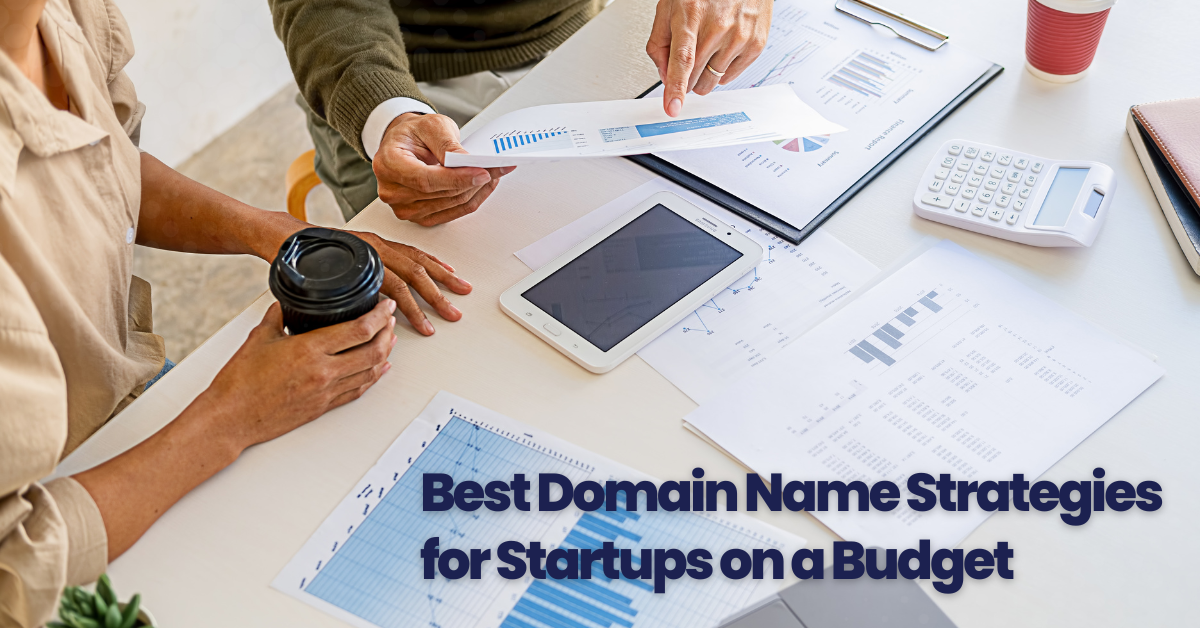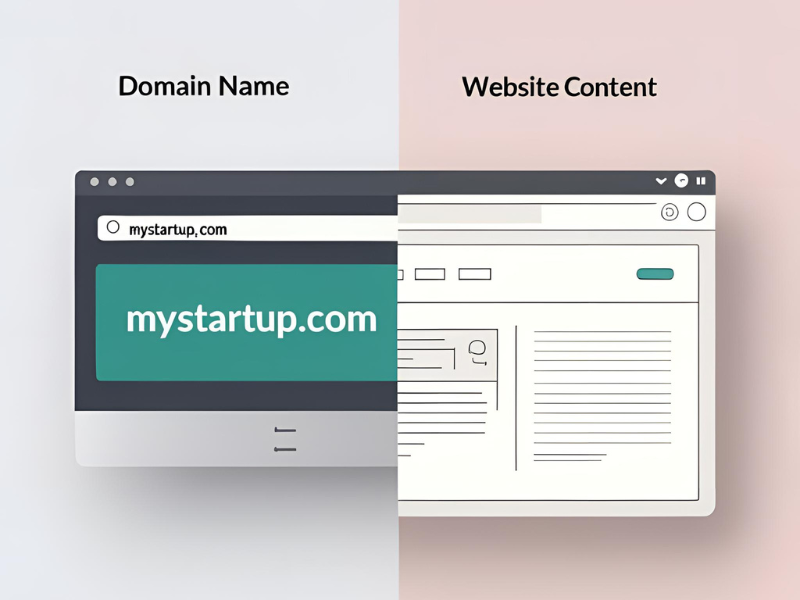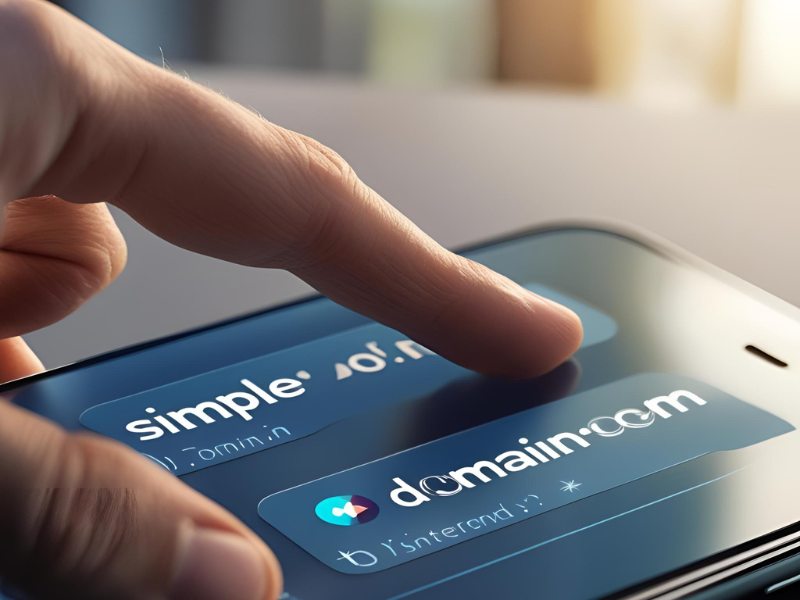
Starting a business with limited cash? You’re not alone. Every dollar counts when you’re bootstrapping, and your domain strategy can make or break your digital presence without breaking your bank account. Here’s the thing most founders get wrong: they think expensive equals better when it comes to domains.
The smartest startups in 2025 are using a secret weapon called domain backorder to secure premium domain names at standard registration prices instead of paying thousands on the aftermarket. This patient approach has helped countless entrepreneurs get the exact domains they wanted for under $20 instead of emptying their seed funding on a single web address.
Let’s dive into this strategy and other budget friendly tactics that’ll get you a professional web presence without the premium price tag.
Understanding the Basics: Domain vs Website Foundation
Before we jump into money saving tactics, let’s clear up something that trips up new entrepreneurs. There’s a crucial difference between domain and website that affects your budget planning. Your domain name is like your business address on the internet – it’s what people type to find you (like mystartup.com). Your website is everything they see when they get there – the pages, content, and functionality.
You need both, but they’re separate expenses. A domain typically costs $10 to $15 annually, while website hosting and development can range from $50 to $500+ monthly. Understanding this distinction helps you budget correctly and avoid the sticker shock that catches many first time founders off guard.

The Domain Backorder Strategy: Your Secret Weapon
Here’s where things get interesting. Many startups assume that if a domain is taken, it’s gone forever. Wrong. Domain backorder services let you claim premium domains when their current owners forget to renew them.
Here’s how it works: You identify a domain you want that’s currently registered to someone else. Instead of paying premium aftermarket prices (often $1,000 to $10,000+), you place a backorder for a small fee. If the current owner doesn’t renew their domain, you get first dibs on registering it at standard rates.
This strategy requires patience, but the payoff can be massive. Imagine getting TechFlow.com for $15 instead of $15,000 just because someone forgot to renew it.
Success Rate Reality Check Not every domain you backorder will become available, but the investment is minimal compared to premium domain purchases. Even if only one in ten backorders succeeds, you’re still saving thousands compared to aftermarket pricing.
The New Domain Landscape: More Options, Better Prices
The domain game has completely changed since 2020. With over 1,500 domain extensions now available, startups aren’t stuck fighting over expensive .com domains anymore. Here’s what’s working:
Alternative Extensions Are Going Mainstream While .com still dominates with 44.4% market share in 2024, that’s down from 53.3% in 2022. The gap is closing fast, and extensions like .icu, .bond, .buzz and .qpon are gaining serious traction.
Country Codes as Brand Tools Smart startups are repurposing country specific domains like .co, .ai, and .io as generic branding tools. These aren’t just cheaper alternatives – they’re becoming status symbols in tech sectors.
Budget Smart Domain Strategies That Actually Work
Strategy 1: Embrace Creative Extensions
Instead of paying $2,000+ for PerfectName.com, consider PerfectName.tech for $12/year. New generic top level domains offer cost effective alternatives while often being more descriptive of your business.
Best Budget Extensions for Startups:
- .tech (perfect for SaaS and app companies)
- .icu (versatile and globally recognized on a budget)
- .co (clean alternative to .com)
- .bond (professional and memorable for finance brands)
- .ai (great for AI/ML startups)
- .qpon (ideal for discounts, deals and eCommerce)
Strategy 2: Think Brand First, Not Keyword Heavy
Here’s a game changer: Google is moving away from keyword heavy domains in favor of strong, brandable names. Companies like Shokz.com (formerly AfterShokz.com) and Cal.com prove that short and memorable beats long and descriptive.
This shift actually helps cash strapped startups. Instead of competing for expensive keyword domains like “BestMarketingSoftware.com,” focus on creating a unique brand name that’s available across multiple extensions.
Strategy 3: Leverage AI Tools for Domain Discovery
AI driven domain creation tools are helping startups find creative, available domains faster and cheaper. These tools analyze millions of combinations to suggest brandable names you might never have considered.
Popular AI domain generators can save hours of manual searching and often suggest available alternatives that are perfect for your brand and budget.
Strategy 4: Plan for Voice and Mobile
With up to 50% of consumers using voice search daily, your domain needs to pass the “phone test.” If you can’t easily spell it out over the phone, it’s not working hard enough for your marketing budget.
Nearly 60% of web visits come from mobile devices, so prioritize domains that are easy to type on small screens. “Tech.buzz” beats “TechnologicalWorkflowSolutions.buzz” every time.

Smart Timing and Acquisition Tactics
The Patient Approach to Premium Domains
Beyond domain backorders, timing plays a huge role in domain costs. Domain prices fluctuate based on demand and registrar promotions. Many registrars offer significant discounts for first year registrations, especially during Black Friday and end of year sales. Some startups save 50% to 70% by timing their domain purchases strategically.
Monitoring Expiration Dates
Smart entrepreneurs keep lists of domains they’d love to own and monitor their expiration dates. When renewal time approaches, many domain owners simply forget or decide the domain isn’t worth keeping. This creates opportunities for patient startups.
The Multi Extension Protection Strategy
Smart startups often secure their primary domain with a budget friendly extension, then gradually acquire defensive registrations (.com, .co, .net) as revenue grows. A single .com domain might cost $2,000 to $10,000+, while a primary .bond domain plus defensive registrations runs just $50 to $200 annually. Creative extensions alone cost only $10 to $25 annually for maximum savings with modern appeal.
This approach protects your brand without the upfront investment. If your ideal .com domain is taken but you can’t afford aftermarket prices, consider using domain backorder services while building your brand on an alternative extension. This gives you the best of both worlds: immediate brand presence and a path to premium domains.
Avoiding Budget Busting Mistakes
Premium Pricing Traps Some registrars mark up “premium” domains that aren’t actually premium. Always check multiple registrars before assuming a domain is expensive. What costs $500 at one registrar might be $15 at another.
Renewal Rate Surprises That $2.99 first year domain might renew at $25.99 annually. Always check renewal rates before committing, and factor them into your long term budget planning.
Trademark Troubles Legal disputes can force expensive rebranding. Always search existing trademarks before settling on a domain. A free trademark search now saves thousands in legal fees later.
Advanced Budget Strategies
The Geographic Play
Consider country specific domains if you’re targeting local markets. A .ca domain for Canadian startups or .uk for British companies can be both cheaper and more trustworthy to local customers than generic extensions.
The Startup Upgrade Path
Many successful startups follow this progression:
- Launch with budget friendly extension (MyStartup.tech)
- Establish brand recognition and revenue
- Acquire premium .com when cash flow allows
- Redirect original domain to maintain SEO value
This approach lets you start professional without the premium price tag.
Partnership and Networking Opportunities
Some startup accelerators and business organizations offer domain registration benefits. Y Combinator startups, for example, often get access to discounted domain services through program partnerships.
2025 Trends Shaping Budget Domain Strategy
AI Integration is Accelerating Experts predict AI will play a growing role in domain selection, helping startups find creative options faster. This democratizes access to good domain names, leveling the playing field for budget conscious founders.
Security Features Becoming Standard Security features like SSL and privacy protection are becoming standard, often included in budget packages. This means better value for the same money.
Continued Extension Expansion The next round of ICANN applications expected in 2026 will expand options further, potentially creating even more affordable alternatives.
Making Your Domain Work Harder
Once you’ve secured your budget friendly domain, maximize its value:
Consistency Across Platforms Secure matching social media handles when you register your domain. This creates a cohesive brand presence without additional domain costs.
Email Branding Professional email addresses using your domain (hello@mystartup.buzz) look more credible than Gmail addresses and cost nothing extra with most hosting plans.
Subdomain Strategy Use subdomains (blog.mystartup.tech, app.mystartup.tech) to create distinct sections without buying additional domains.
Statistical Insights That Matter
The domain landscape is shifting in favor of budget conscious startups. Here are the numbers that matter:
.com usage among websites dropped to 44.4% in 2024 from 53.3% in 2022, showing increased acceptance of alternative extensions.
Growth in web domain name sales market hit 4.6% annually in the US from 2018 to 2023, indicating a healthy, expanding market with room for newcomers.
Over 40% of domains now use country extensions, proving that non traditional domains are mainstream.
1,500+ TLDs are available in 2024, giving startups unprecedented choice in finding the perfect domain at the right price.
High value .ai domain sales saw 20 domains in the top 100, with 13 selling for $100,000+, showing the potential value of alternative extensions.
The Bottom Line for Budget Conscious Founders
The best domain strategy for cash strapped startups isn’t about finding the cheapest option – it’s about finding the smartest value. A well chosen .tech domain that perfectly matches your brand beats an expensive .com that drains your marketing budget.
The domain market has matured, creating opportunities for savvy founders who understand the new rules. Alternative extensions aren’t consolation prizes anymore – they’re strategic choices that can differentiate your brand while preserving capital for customer acquisition and product development.
Remember: your domain name gets people to your digital door, but your product and execution determine whether they stick around. Invest accordingly.
Domain backorder services represent just one tool in your arsenal, but they’re particularly powerful because they let you compete for premium domains without premium budgets. Combined with smart extension choices and strategic timing, you can build a professional domain portfolio that grows with your startup.
The key is patience, research, and understanding that domain success isn’t about having the most expensive address – it’s about having the right address for your audience and budget.
Frequently Asked Questions
Should I choose a .com domain even if it’s expensive for my startup? Not necessarily. While .com domains have high recognition, modern consumers are comfortable with alternative extensions, especially when they’re relevant to your business. A .tech domain for a software startup can actually strengthen brand positioning while saving thousands.
How can I tell if a domain name will work long term for my startup? Test it with the “phone test” – can you easily spell it out over the phone? Also consider if it passes the “business card test” – does it look professional in writing? Avoid hyphens, numbers, and anything that requires explanation.
What’s the difference between domain registration and web hosting costs? Domain registration is typically $10 to $25 annually for the web address itself. Web hosting (where your website files live) ranges from $5 to $100+ monthly depending on your needs. Many providers bundle these services, but they’re separate components with different pricing structures.
Is it worth buying multiple domain extensions for brand protection? Start with your primary domain and consider protective registrations as your startup grows. Many successful companies began with single domains and expanded their portfolio based on revenue and brand value. Don’t overspend on defensive domains until you have the budget for it.
Can I upgrade from a budget domain to a premium .com later? Absolutely. Many startups follow this path: start with an affordable, brandable domain, build recognition, then acquire premium domains when cash flow allows. Proper redirects can maintain your SEO value during the transition.
How do I avoid hidden costs with budget domain registrations? Always check renewal rates, not just first year pricing. Look for included features like privacy protection and email forwarding. Some registrars offer low introductory rates but charge premium renewal fees. Read the fine print and budget for long term costs, not just initial registration.
How does domain backorder actually work in practice? When you place a backorder, you’re essentially getting in line to register a domain if it becomes available. The service monitors the domain’s expiration date and attempts to register it the moment it becomes available. Success isn’t guaranteed, but the cost is minimal compared to aftermarket prices.
What happens if multiple people backorder the same domain?
Most backorder services handle this through auctions or first come, first served systems. Even if you end up in a small auction with other interested parties, the final price is typically much lower than premium aftermarket sales.
About the author: Kean Ong is a blog writer and digital marketing specialist at Dynadot.com, where he focuses on domain strategy, SEO, and online branding. With deep expertise in the domain industry, he creates content that helps businesses and individuals grow their digital presence. Kean is passionate about making complex web topics accessible and actionable for all.
